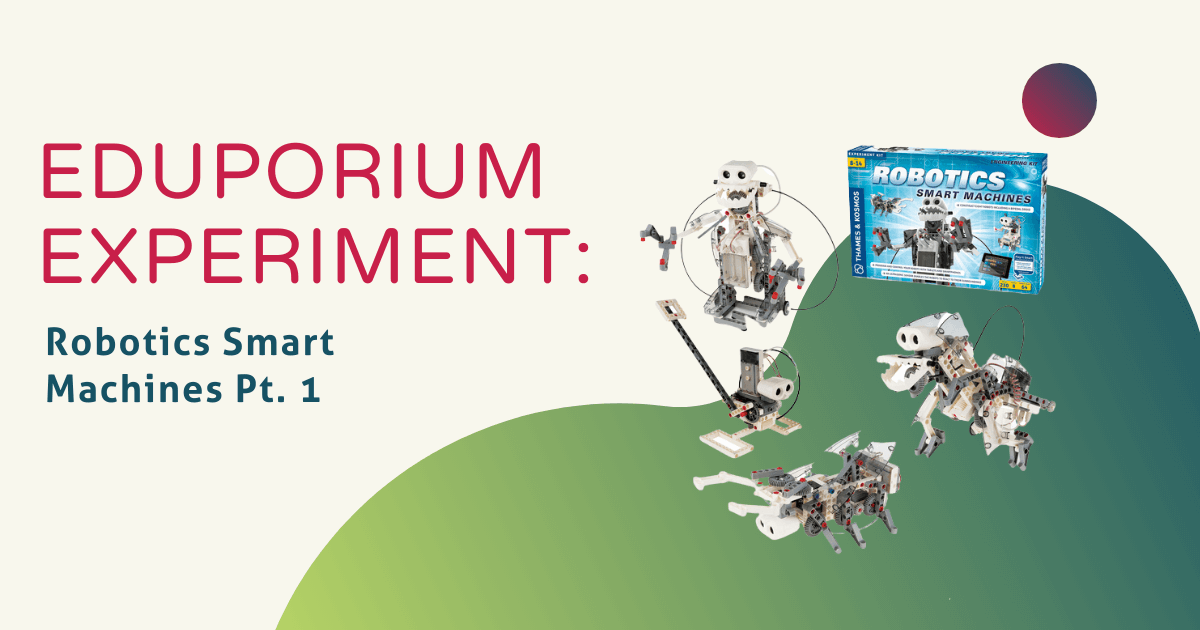Thames and Kosmos makes and distributes over 100 hands-on science kits designed to engage students in high-quality STEM learning with real-life experiments. For today’s Eduporium Experiment, I looked at one kit in particular: the Robotics Smart Machines set—a 230-piece toolbox designed to teach the basics of engineering and robotics to kids as young as 8 years old. Included in the package are instructions for how to build and program eight different robots and a suggestion at the end of the manual to see what else you can design with the included parts and developed know-how.
While I’d love to go through the whole box, project by project, for today’s experiment, I limited myself to one robot. I’ll be taking you through the process of building and running the Bipedal Droid—as the model most prominently displays on the cover of the box, and the first one in the manual, it seemed like the best choice for diving in.
One of the best things about the kit, which I realized almost immediately, is that I only needed very few extra pieces to get the most out of it—the main requirements were a tablet device (iOS or Android), which I borrowed from our company supply, and three AA batteries. Being the meticulous person that I am, I then counted out the pieces from the box that I would need to assemble the Bipedal Droid. This particular project uses 173 out of the 230 pieces in the box, but, don't worry, it wasn't too much to handle! I got to work and the rather detailed task of putting the robot together.
The instructions in the manual are also wonderfully detailed, I found, and very clear, as well. Based on these instructions and the size of some of these parts, this kit is definitely meant for students who are accustomed to building sets, or at least have a fair amount of patience. A number of the steps have extra notes to them, parts might need to be aligned a certain way, order might matter on even a small scale—so I learned from experience that being careful with construction is important!
Next, I set up wireless connection to the app—again, the manual was thoroughly helpful here—and ran the suggested program for this particular robot, which is Program 7. As expected, my newly-built bot walked around and avoided obstacles quite nicely. One more warning, this time paraphrased from the manual—this robot worked much better for me on a smooth table surface than it did on the carpeted floor of our office. They do recommend a smooth surface for operation, and with experience, I would have to agree. While it wasn’t a huge difference (the robot still walked on the carpet), there was still a noticeable change once I moved it to the table. It walked a little faster, and I was glad I’d moved it.
This kit was a delight to build and operate, and I wouldn’t hesitate to take the time to build one or more of the other projects in this box. I left this project excited about robots, and what else Thames & Kosmos might have in store in the future. To buy kit from the Eduporium store, click below!
If you have any ideas for products you'd like to see featured on the Eduporium Experiment, let us know! Comment below or send us a message on Twitter or Facebook!



